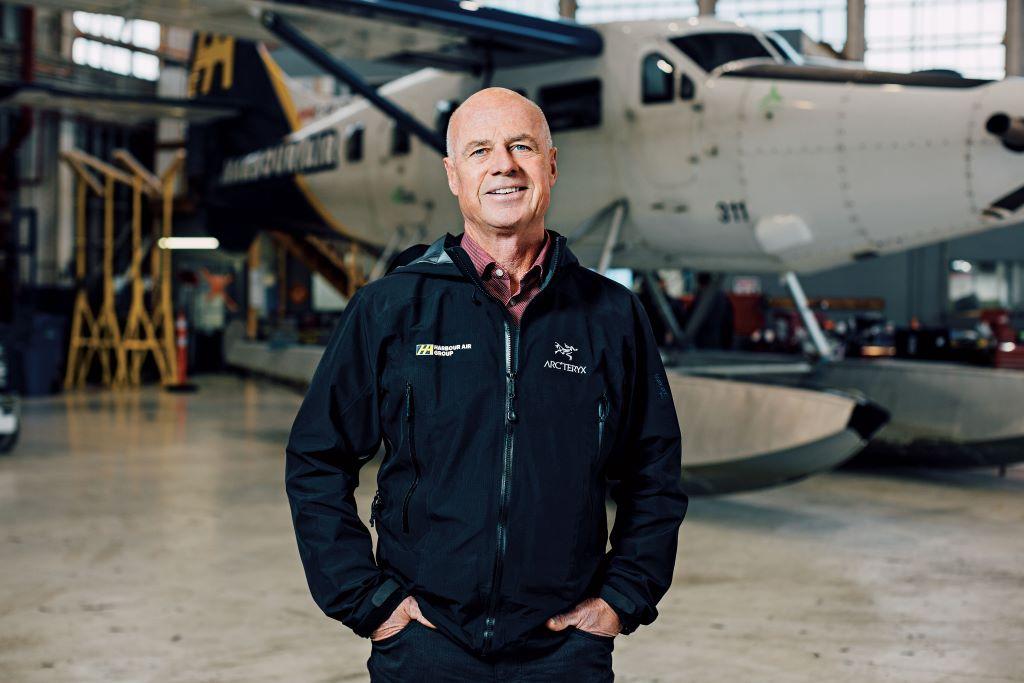Fast Five: Going Commercial with Electric Motors

Greg McDougall, CEO of Harbour Air in Vancouver, Canada, operates a fleet of 44 seaplanes carrying a half million passengers a year. He likes disruptive technology and decided to partner with magniX, the electric motor company, and use government grants to retrofit his de Havilland Beavers with battery-powered motors to replace PT-6 turboprops. His airline has a clear shot to be the first in the world to enter commercial service with electric motors. The Beaver aircraft was designed 75 years ago.
Why is it that putting electric motors on your Beaver floatplanes makes sense for Harbour Air?
That Harbour Air is unique in its route structure is what enables us to even look at this technology as it exists from a practical standpoint. Most of our flights are half an hour or less. We carry people from downtown to downtown, by landing in the inner harbors of some of these destinations (Seattle and Vancouver, for example). Obviously, the electrification of aviation is coming so we saw no reason not to pioneer the regulatory aspect of it because of our unique circumstances.
Will an electronic motor cost less to operate than a turboprop?
An electric motor is simple technology with less wear and tear and so is a lot less expensive to maintain than a turboprop operating at high temperatures. The retrofits for an electric system currently are projected to be somewhere around the same cost as if you were to do a retrofit from a piston engine to a turboprop. However, the battery systems right now are very expensive. We hope they’re going to be less expensive tomorrow. It seems like almost every major aerospace manufacturer has a program where they’re investing in battery technology or hybrid technology. We’ve recognized that as we move through this process, the sands are shifting under our feet.
How has your proposal to electrify your fleet starting with the Beaver been received?
Two years ago, when I first introduced this concept to the aviation industry, people pretty much ridiculed me. Then on June 14, I made a presentation on a Canadian Aeronautics and Space panel to 350 academics and government people. What a long way we’ve come in two years from people scoffing at me to everyone now wanting to talk about it and invest in it. So it’s very interesting how things are changing.
What are the key issues that you see for getting the retrofit certified? Are you going to certify it first with Transport Canada and then the FAA?
The FAA and Transport Canada have a bilateral so we’re essentially playing to both audiences. The Transport Canada person said yesterday that although we’re using standard types of certification processes, we’re still in uncharted waters here in terms of filling in the boxes. And so, we have to demonstrate the safety standards that are going to be required to certify this. It’s not up to Transport Canada to do it, it’s up to us. So, it’s interesting for us because the goalposts are moving down the field as we move down the field. And that’s the part we can’t really control. But we have faith in the technology and aim to demonstrate that it’s as safe or safer than what we’re currently using. That’s really the Holy Grail. Once the regulatory hurdles are met, that opens the gate for all kinds of modifications to different aircraft. Once the technology is proven that will open the floodgates.
You have been flight-testing a magniX 500 engine with 750 shp. on a Beaver but now are equipping a second test aircraft with a magniX 250 with 375 shp. Why is that?
We’re finding that the energy requirements for the Beaver airframe are actually less than we anticipated to maintain level flight and for general performance. We can do it with less power than we anticipated. So obviously we want to make this aircraft as efficient as possible from a range and payload perspective. So, anything we can do to make this happen is going to be done on our version 2 eBeaver. The performance is quite similar to the conversion from piston power to the PT-6 and the electric motor gives you instant torque.





Comments